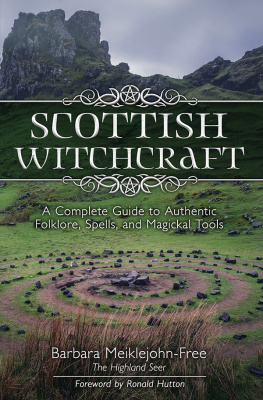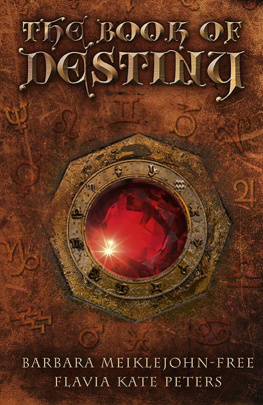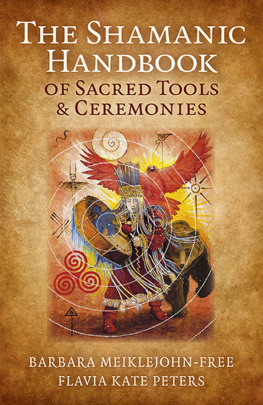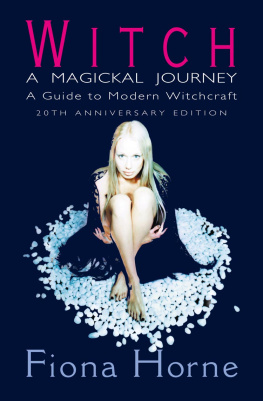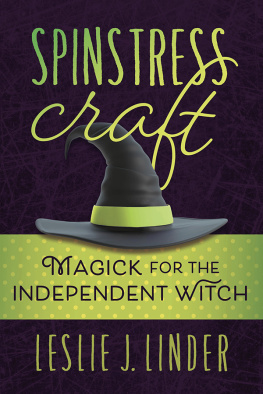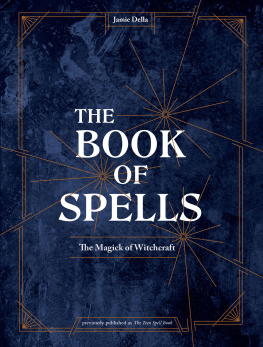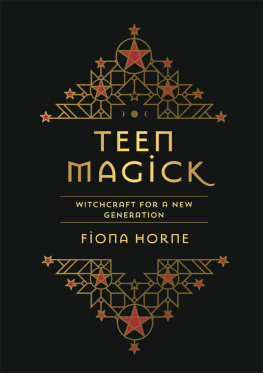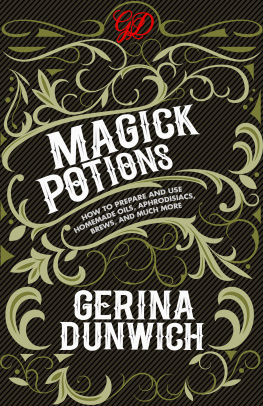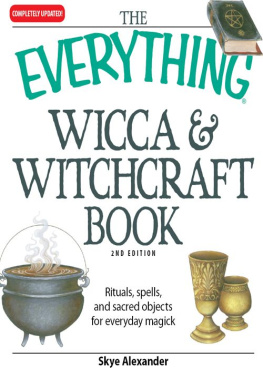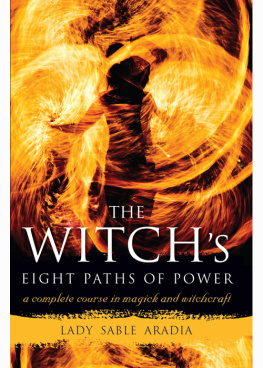Barbara Meiklejohn-Free, the Highland Seer, is considered the UKs best-loved wise woman and revered elder of the Old Ways. Barbara has been working with spirit since the age of twelve. She is a heredity, eclectic, and solitary witch, having been initiated into the craft at sixteen, and is now a High Priestess of Isis and of the Cailleach. Drawing on her extensive work with indigenous cultures from around the world, she weaves a deep understanding and wisdom of the ancient landscape of her own Pagan heritage. She is a recognised expert in assisting people to explore lost arts of initiations as well as hosting rites, rituals, and ceremonies reflected in her bestselling and award-winning books and oracle cards. Barbara uses mediumship, psychic abilities, shamanic healing, rebirthing, soul retrieval, past life regression, and rites of passage, combining them all together in her readings and raising them to new levels of awareness in order to help people become aware of who they are and why they are here.
Barbara also leads people on guided site visits to Egypt, South America, the USA, Hawaii, and many other places to meet the native people of these lands, to gain an understanding firsthand of the way they live close to and listen to the teachings of Mother Nature. She worked at the Arthur Findlay College at Stansted as a course organiser and workshop leader and taught at the College of Psychic Studies in London. Her shop in BuxtonArnemetias, which she runs with Flavia Kate Peterssells all the tools of the craft and wonderful clothing from around the world. She also facilitates private consultations at her shop.

Llewellyn Publications
Woodbury, Minnesota
Copyright Information
Scottish Witchcraft: A Complete Guide to Authentic Folklore, Spells, and Magickal Tools 2019 by Barbara Meiklejohn-Free.
All rights reserved. No part of this book may be used or reproduced in any matter whatsoever, including Internet usage, without written permission from Llewellyn Publications, except in the form of brief quotations embodied in critical articles and reviews.
As the purchaser of this e-book, you are granted the non-exclusive, non-transferable right to access and read the text of this e-book on screen. The text may not be otherwise reproduced, transmitted, downloaded, or recorded on any other storage device in any form or by any means.
Any unauthorized usage of the text without express written permission of the publisher is a violation of the authors copyright and is illegal and punishable by law.
First e-book edition 2019
E-book ISBN: 9780738761190
Cover design by Shannon McKuhen
Editing by Brian R. Erdrich
Llewellyn Publications is an imprint of Llewellyn Worldwide Ltd.
Library of Congress Cataloging-in-Publication Data
Names: Meiklejohn-Free, Barbara, author. | Erdrich, Brian R., editor.
Title: Scottish witchcraft : a complete guide to authentic folklore,
spells, and magickal tools / Barbara Meiklejohn-Free ; editing by Brian
R. Erdrich.
Description: First edition. | Woodbury, Minnesota : Llewellyn Worldwide.
Ltd, 2019. | Summary: Scottish Witchcraft is an introduction and guide
to the magickal folk traditions of the Highlands of Scotland. Author
Barbara Meiklejohn-Free, a Scottish hereditary witch and the Highland
Seer, takes the reader on a journey through the history of the craft and
shares the ins and outs of incorporating these ancient magickal
traditions into ones own life. Discover the secrets to faerie magick,
divination, and communicating with ancestors. Explore herbal and plant
lore, Scottish folk traditions, and magick rituals for your specific
needs-- Provided by publisher.
Identifiers: LCCN 2019034951 (print) | LCCN 2019034952 (ebook) | ISBN
9780738760933 (paperback) | ISBN 9780738761190 (ebook)
Subjects: LCSH: Witchcraft--Scotland.
Classification: LCC BF1581 .M45 2019 (print) | LCC BF1581 (ebook) | DDC
133.4/309411--dc23
LC record available at https://lccn.loc.gov/2019034951
LC ebook record available at https://lccn.loc.gov/2019034952
Llewellyn Publications does not participate in, endorse, or have any authority or responsibility concerning private business arrangements between our authors and the public.
Any Internet references contained in this work are current at publication time, but the publisher cannot guarantee that a specific reference will continue or be maintained. Please refer to the publishers website for links to current author websites.
Llewellyn Publications
Llewellyn Worldwide Ltd.
2143 Wooddale Drive
Woodbury, MN 55125
www.llewellyn.com
Manufactured in the United States of America
Dedication
To all the wise men and wise women of Scotland, past and present, who have contributed to our beautiful craft against all odds and in the face of all adversities. Without them I simply would not be.
Disclaimer
This book and its spells, rituals, and workings are intended for spiritual and emotional guidance only. It is not intended to replace medical assistance or treatments.
Contents
by Professor Ronald Hutton
Chapter One:
Chapter Two:
Chapter Three:
Chapter Four:
Chapter Five:
Chapter Six:
Chapter Seven:
Chapter Eight:
Foreword
W hy does Scottish witchcraft matter? Historically there are three big reasons. One is that Scotland was one of the worst places in the whole of Europe for witch-hunts, clocking up a total of something between fifteen hundred and three thousand executions between 1563 and 1736. By comparison, England, which had five times the population, probably put to death less than five hundred people as witches in the same period. Two factors account for the difference. One was that the Scots had a much more extreme Protestant Reformation, which swept away bishops, cathedrals, and festivals like Christmas and Easter as well as all the other features of medieval Catholicism. As part of this zeal, they developed a more ardent fear of Satan, whose servants they deemed witches to be. The other factor was a difference in legal systems. In England a person accused of witchcraft was tried by a pair of professional judges, and the verdict was decided by a jury drawn from a wide area and probably not known at all to the accused. Evidence was therefore rigorously scrutinised, and an English person had an average 75 percent chance of being acquitted of the charge.
In Scotland, a suspected witch was arrested by the local gentry and clergy, who would force her or (more rarely) him to make a confession that was then sent to the central government. The latter then usually sent back permission to try to execute the person concerned, which permitted virtually no chance of escape.
The second reason why Scottish witchcraft matters is that it has had a great influence on Western views of witches in general, simply because Scottish writers took an interest in the history of witchcraft much earlier than those in England. In particular, two Scots in the early nineteenth centurythe poet and novelist Sir Walter Scott and the legal historian Robert Pitcairnpublished works on it which largely defined British knowledge of witch trials until the late twentieth century. For example, the word coven, to mean a group of witches, actually appears historically in only the trials of two women at Auldearn, a village east of Inverness on the Moray Firth, in 1662. One of those trials, however, happened to be of Isobel Gowdie, who left the longest, most detailed, and most lurid confession by an alleged witch in British history, telling of her adventures with the devil, the queen and king of the fairies, and her coven, a word which seems to have been coined by her and her companion from the contemporary term conventicle, meaning an illicit religious meeting. Pitcairn published the confession, and it became so famous that the word was accepted across the English-speaking world.

